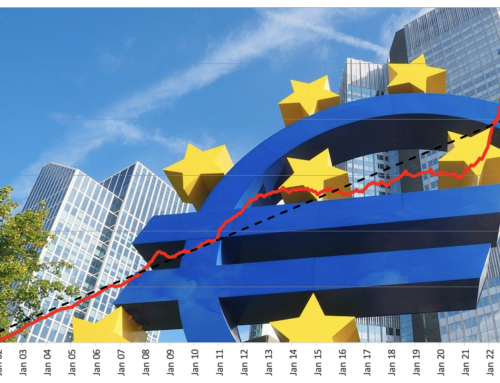This insight is a summary of the article by Alex Edmans (Professor of Finance at London Business School), recently published in the Financial Analyst Journal:
Alex Edmans (2023), Applying Economics – not gut feeling – to ESG, FAJ 79:4, 16-29.
All media talk about ESG (Environment, Social, Governance), that is, the push required of all of us—companies and individuals—to make choices that have a positive impact on the environment, society, and the way we operate and interact.
The author proposes analyzing this topic through an economic-financial lens, in order to evaluate as objectively as possible when and how this type of investment makes sense.
The article identifies 10 myths to debunk, to help investors make decisions without being swayed by emotions. The main conclusions are based on established research (although not yet exhaustive), as the ESG theme has existed for many years.
Myth 1: Shareholders focus only on the short term
[Answer: no, shareholder value is a long-term concept]
Applying basic finance concepts, the value of a company (price) is equal to the present value of all future cash flows. It follows that to maximize the value of the company (a typical shareholder objective), it is necessary to maximize future cash flows.
Therefore, there is complete compatibility between shareholder objectives and ESG projects, as long as these can generate positive cash flows over time.
Myth 2: Shareholders only care about the value created for themselves
[Answer: no, shareholders have additional objectives beyond just profit]
Shareholders also care about other stakeholders for two reasons:
- They have to, as stakeholders are protected by contract (e.g., employees, customers) or by law (e.g., environmental regulations).
- They are incentivized to, in order to ensure a more pleasant and productive work environment and society.
Myth 3: Sustainability risk influences the cost of capital
[Answer: no, sustainability risk affects cash flows, lowering them]
Although this is a technical point, it is important to highlight that sustainability risk does not increase the cost of capital (used in the denominator to discount cash flows in ‘Myth 1’) but affects cash flows (in the numerator), as the discount rate is influenced only by market risks and not by specific company events and risks (e.g., the Volkswagen scandal where emission test results were falsified does not concern the market, leading to a reduction in Volkswagen’s operating cash flows).
Analyses that, for convenience, are carried out by modifying the discount rate (instead of cash flows) should be viewed as unreliable unless dealing with a systemic effect (e.g., applying a carbon tax to an entire sector).
Myth 4: Sustainable stocks have higher expected returns
[Answer: no, sustainability might already be priced in. An indiscriminate preference for sustainability could lead to lower returns]
As previously mentioned, the price of a stock today is the present value of all future cash flows. This implies that the market may have already priced in a competitive advantage based on sustainability, resulting in current buyers not benefiting from this added value. A stock can add value only when it creates wealth that is not already priced in by the market. From this perspective, the ESG factor can be evaluated like other factors (e.g., value, growth), which may be over or underestimated by the market over time.
Myth 5: Climate risk is an investment risk
[Answer: no, climate risk represents an exogenous factor]
The confusion often arises from the tendency to measure climate risk through the amount of emissions produced. If the government were to impose a global tax based on emissions, this risk would become systemic, but in all other cases, it is not. Therefore, it should not be used as the sole measure to avoid investments in carbon-emitting companies. Moreover, quantifying emissions does not explain the “physical risk” a company faces when the climate changes (e.g., a real estate company developing units close to the sea). In light of the slow political progress made to combat climate risk, one could say that “physical risk” is actually more important than that measured through emissions.
Myth 6: ESG metrics measure the social impact of the company
[Answer: no, the overall impact is different from the partial one]
ESG rating agencies often evaluate a company without considering the implications that ESG choices may generate at an aggregate level. For example, a company could sell some polluting plants to competitors, becoming greener for rating agencies, without considering that those who buy the polluting plants will continue to use them. The same consideration could be made for a country aiming to have only electric cars by exporting those that use fossil fuels abroad: the exporting country improves its environmental impact, but in aggregate, it does not seem to be so. Therefore, the ESG rating does not seem to measure the overall (social) impact of a company on society.
Myth 7: More ESG is always better
[Answer: no, even ESG suffers from diminishing marginal returns, and there are barriers to change]
Like all investments, ESG investments must also face reality, meaning there is an optimal level beyond which the costs to increase ESG are not justified by the additional revenues. Example: if gender diversity is desirable, too much diversity could lead to misunderstandings and communication difficulties within the company.
Myth 8: Greater shareholder (minority shareholders) engagement is always desirable
[Answer: no, minority shareholders can be incompetent and/or lead to deadlock situations]
As highlighted in the previous point, there is an optimal level of shareholder engagement that can add value, but saying it is always desirable is wrong, as it can lead to inefficiencies and/or wrong choices by the administration (minority shareholders may have conflicts of interest with the company, lack of competence, distorted views on the future developments of the business, etc.).
Myth 9: Linking executive bonuses to ESG results will increase the company’s ESG performance
[No, skewing compensation towards ESG will neglect other important parameters for company management]
This topic is very hot politically, and especially in Europe, there seems to be a tendency to want to bind companies to compensate their executives based on the achievement of certain ESG parameters. The main problem with this approach is the short-term horizon with which it would skew company management, leading to suboptimal results. Instead, it would seem more appropriate to lengthen the time horizon, compensating executives with the company’s own shares and forcing them to hold them for years (5-7 years). A long-term approach is beneficial both for the company’s overall performance and for its ESG performance.
Myth 10: Market failures justify regulatory interventions
[Answer: no, public intervention is justifiable only when market failures exceed those dictated by regulations]
The main problem with regulation is due to two facts:
- The government can only regulate measurable elements, neglecting other aspects that may be appreciable (e.g., it could force a salary increase without distinguishing if there are flexible hours, remote work, different corporate cultures).
- Regulations are generally unique for a variety of heterogeneous companies (e.g., if a board of directors already operates in balance, forcing greater diversity could create problems).
It should be noted that climate change is a good example of market failures exceeding legislative ones. In this case, public intervention is preferable to the market, despite the aforementioned deficiencies.




